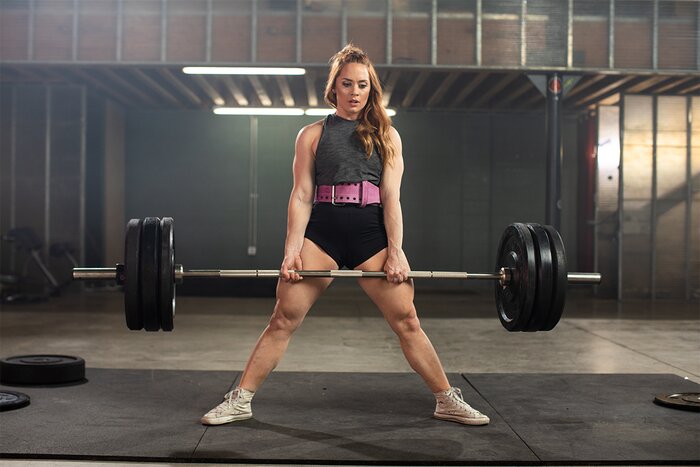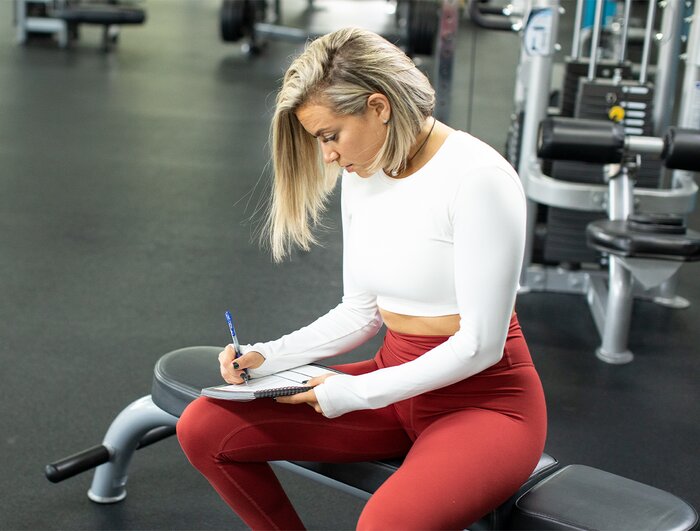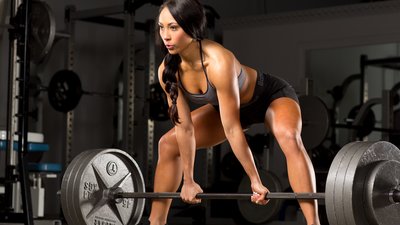Powerlifting for Beginners | Nutrition for Powerlifters | Powerlifting vs. Bodybuilding | Powerlifting Training for Women | Powerlifting Meet Prep | Advanced Powerlifter Pro Tips | Essential Powerlifting Gear
In case you haven't noticed, powerlifting isn't the boys club it was once reputed to be. More and more women are realizing that becoming a better, stronger, more powerful, and more confident person shouldn't be a male-only endeavor.
The numbers back this up. In the United States alone, the number of women powerlifters has doubled since 2015—and this includes only those women who compete in powerlifting events, not the uncounted number of women who train like a powerlifter without setting foot on the platform.
Looking to get started? Great. Here's how to progress on the journey of strength.
1. Find a Program or Coach
If you're a newbie to serious lifting, or even just a beginning powerlifter, start by finding a training program or a coach—or even better, both.

Quality beginning programs are easy enough to find—but so are not-so-high-quality ones. Uplifted: Build Muscle and Strength with Meg Squats is a great place to start, because it combines lots of practice and in-depth videos on the big lifts, but also targeted assistance work to help you build up what's weak and feel good while lifting heavy.

However, even with a great program, it's worth asking around and seeing if you can find someone local who can give you feedback and form tips face to face. You could even organize your own women's powerlifting group so you can train together.
2. Master the Basic Lifts
Each of the three main powerlifts is an artform in and of itself. Mastering the squat, bench, and deadlift requires experience, feedback, and lots and lots of practice with moderate weights.
For more information on how to do each of these lifts, review professional powerlifter Layne Norton's in-depth videos "How to Squat," "How to Bench Press," and "How to Deadlift."
Getting serious about the powerlifts? You need a quality belt to earn the safest, strongest lifts possible.
3. Schedule Your Training Sessions
This may seem obvious, but if you're an "I go to the gym when I can, every once in a while" person, powerlifting likely isn't for you. Just like you schedule your work and the rest of your life, you need to set up specific times each week when you will go to the gym to train.

Schedule your workout time—and your rest days—and then respect them. Only by staying on track can you work slowly but surely toward getting stronger. You'll be lifting some heavy weights as part of your powerlifting training. That means you need more rest than you would with a typical fitness or bodybuilding-focused split.
4. Attend a Local Powerlifting Meet
To those of us with the bug, it's fun and exciting to watch people lift heavy weights and smash records. It can also be highly motivating and a great way to network with other women new to the sport, as well as with experienced lifters.
There's no better way to learn how a meet is run, how lifters train for contests, what they do in the runup to the event, and how the judges make their decisions.
Many powerlifting events are live streamed on powerliftingwatch.com and YouTube if you can't attend a meet in person.
5. Set Realistic Goal Numbers
At first, your coach can help you set reasonable, attainable goals. You may look at your current one-rep max on a certain lift and think you're a lock for something way bigger, but a better goal for your first meet might simply be going six for six.

As you progress, they can then help you identify records and rankings for each weight class and division that might be within your reach. Bookmark powerliftingwatch.com so you can start getting to know the culture.
6. Choose Your First Meet!
For your very first event, start with a local gym meet or a push-pull event. These kinds of meets are usually laid-back, fun events that won't overwhelm you. Shoot for an event that's at least 8-12 weeks away so you have ample time to prepare for it.
Don't wait until meet day to try wrist wraps and other accessories. Train with them through your whole prep!
Before you start to train for a specific event, make sure you understand the rules and regulations of the federation sponsoring the meet. Your coach can help you with this, too!
7. Get Your Reps In!
You can get all your ducks in order, but you have to push them into the water so they'll learn to swim! And that means training consistently for months—even years—on end.
Once you have your program lined up and powerlifting gear ready, it's time to hit the gym and start training! Use BodySpace or BodyFit to track your weights, reps, rest times—all of it. Enjoy going down the rabbit hole and enjoy watching the weights on the bar go up!
Creatine has been shown to help lifters build size and increase their max strength. For aspiring powerlifters, 5 grams per day is a no-brainer.

